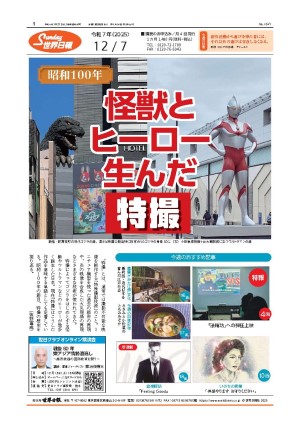第2回米朝首脳会談の危うさ Peril in a second summit
何十年も凍結状態にあった朝鮮半島の現状――これは、日本や中国を含む北東アジアを氷のように冷たい抱擁のまま身動きできなくしてきたものだが――その氷が解けて砕ける兆候が出始めている。
トランプ大統領は、北朝鮮の指導者、金正恩の新たな関係について交渉したいという意思の表明を受けて、彼との第2回首脳会談の準備をしている。しかし、そういった準備も新しい障害にぶち当たっている。
彼の方から、核兵器を含む軍の重火器装備品の詳細を明らかにするという申し出があったのだが、米国、韓国、そして日本は、平壌の弾道ミサイル計画のための一つの本部の役割をしている未公表の核基地を見つけたために、幻滅の淵に突き落とされたのである。
「朝鮮戦争」に休戦協定が締結され、戦闘にも終止符が打たれたことによって誕生した以前の合意が破られた背景には、対北朝鮮国際制裁連合のようなものが結成された結果、中国に対する要求がどんどん大きくなっていったことがある。北朝鮮の政権は、どうにかして、闇のマーケットの供給源を見つけようと努力しようとしたが、結局、中国の経済援助に重く依存することとなった。中国経済が減速する中、中国にかかる大きな負担が喫緊の課題となった。
非武装地帯は、1953年7月、不安定な休戦協定によって終わった、彼らの3年越しの戦争以来、二つの朝鮮の間の緩衝地帯の役割を担ってきている。紛争が起こる前は、半島は、第2次世界大戦後、米軍とソ連軍を分かつ38度線に沿って並行して、概略二分されていた。休戦協定後、60年たった今も、朝鮮半島の二つの国は、幅2.5マイル(4㌔)、長さ155マイル(250㌔)の細長い土地によって、いまだに分断されたままなのである。その真ん中には板門店の休戦村がある。
ミサイル基地は、北朝鮮に、以前締結された協定で約束されたように、北朝鮮に「完全、かつ、検証可能で、不可逆的」非核化を守らせるすべての協定の中に入るべきものとならなければならないものであった。今問題になっている新五里(シノリ)ミサイル基地は、非武装地帯から北へ132マイル(212㌔)の所にある7平方マイル(18平方㌔)の基地で、中距離弾道ミサイル「ノドン1」を備え、1個連隊規模の兵隊を駐留させることができる。
北は、よくあるおとり商法をしているように見える。平壌が望んでいる段取りは、たとえ核施設を破壊することがあっても、この運用能力は現状のままにしておくことである。ワシントンは、これが初めてではないが、その共産主義国家との交渉においては、考えが甘かった。そして、もう、そのような大人げなさは捨てなければならない。
最近分かったことだが、米国は、北朝鮮とスポンサーの中露が、半島の再統一に至る包括的な交渉をすぐにする用意があると思い込んでいた。朝鮮半島の国の再統一のための交渉はスウェーデンの仲介と後押しによってなされていた。スウェーデン人は、それらを受け入れ可能にする軍事的保証なしに協定をしばしば推し進めようとする。
厳しい制裁に支えられたワシントンの対平壌の影響力は、ソウルの文在寅大統領の左翼政府の猛烈な融和政策によって小さくなってきている。文大統領は北の再統一のための提案に真剣に取り組んできた。一方、中国と北朝鮮は、重要なソウル-東京-ワシントンの戦略的同盟関係を断ち切ることに精を出してきた。
韓国の保守派は、米軍のシリアからの撤退の例を指しながら、北朝鮮と中国の交渉の一部として、トランプ政権は韓国から米軍を撤退させるのではないかと心配している。北朝鮮は、米軍の半島での費用の分配をめぐる米国と韓国の綱引きに付け込んでいる。平壌は、「海外勢力」と闘うために韓国は団結すべきだという議論を強化したがっている。
経験豊かな外交官に指導された交渉を10回も重ねたにもかかわらず、米国も韓国も昨年は、交渉は費用分担のレベルで頓挫し、合意に至らなかった。北朝鮮の公的新聞の社説は、韓国は防衛費の分担金を増額するようにとの米国による要請は、緊張緩和に反するものだと論じている。そのような状況下で「朝鮮半島に米国の戦略兵器を配備する費用を課すことによって、韓国側の防衛負担金の増額を要請することは時代錯誤である」と主張している…等々。良いこともアジアではなかなか簡単にはいかない。
(1月29日付)
The status quo on the Korean peninsula, which had been frozen in place for decades - binding northeast Asia, including Japan and China, in an icy embrace - has begun to show signs of cracking.
President Trump is preparing for his second summit with North Korean leader Kim Jong-un, accepting Mr. Kim’s professions of willingness to negotiate a new relationship, and those preparations have hit new obstacles.
Mr. Kim’s offer to reveal details of his heavy weapons armaments, including nuclear weapons, has turned sour as the United States, South Korea and Japan found an undeclared weapons site serving as the headquarters of one of Pyongyang’s ballistic missile programs.
Behind the breakup of the previous arrangement on the peninsula, developed as a result of the armistice that ended the fighting in the Korean War, were the growing demands on China as a result of international sanctions against Pyongyang. The North Korean regime has managed to find black market sources for trade, but it has depended heavily on Chinese economic aid. This considerable burden on China has come into sharper focus against the slowing Chinese economy.
The demilitarized zone that has served as a buffer between the two Koreas since their three-year war ended in an uneasy truce in July 1953. It continues to keep the two Koreas apart. Before the conflict, the peninsula had been roughly divided along the 38th parallel by the United States and the old Soviet Union at the end of World War II. Six decades after the truce, the two Koreas remain still divided by a 2.5-mile wide, 155-mile-long strip of land centered on the truce village at Panmunjom.
Missile bases would have to be part of any agreement committing North Korea to “complete, verifiable, and irreversible” denuclearization, as promised in the earlier arrangement. The Sino-ri complex in question now is a seven-square-mile base 132 miles north of the demilitarized zone, housing a regiment-sized unit equipped with Nodong-1 medium-range missiles.
The North appears to be playing a familiar bait-and-switch game. The arrangement Pyongyang wants would leave in place this operational capability even if it destroys its nuclear facilities. Washington has been naive, not for the first time, in its negotiations with the Communist state, and now it must put aside its innocence.
The latest revelation suggests the United States has been naive in the assumption that North Korea and its Chinese and Russian sponsors were ready to make a comprehensive deal leading to reunification of the peninsula. The negotiations for a reunited Korean state have been under the auspices and pushed by Sweden. The Swedes often push agreements without the military guarantees that make them acceptable.
Washington’s leverage with Pyongyang, backed by severe sanctions, has been eroded by the aggressive appeasement policies of the left-wing government of President Moon Jae-In in Seoul. President Moon has treated seriously the North’s overtures for reunification. China and North Korea, meanwhile, have worked continuously to split the critical Seoul-Tokyo-Washington strategic alliance.
South Korean conservatives, pointing to the U.S. military pullout from Syria, worry that the Trump administration will withdraw U.S. forces from the South as part of a deal with North Korea and China. North Korea is exploiting the tug-of-war between the United States and South Korea over sharing costs for American forces in Korea. Pyongyang wants to strengthen its argument that the South should unite with the North to fight against “foreign powers.”
Despite 10 rounds of negotiations led by experienced diplomats, the United States and South Korea could not reach an agreement last year on the level of cost sharing. An editorial in the official North Korean newspaper argues that the U.S. demand for an increase in South Korea’s share of defense costs runs counter to easing tensions. Under such conditions, the editorial argues, “it is anachronistic to demand the increase of defense costs contribution by imposing the costs of the deployment of U.S. strategic assets to the Korean peninsula.” And so it goes. Good things do not come easy in Asia.
January 29, 2019





